Talleres Córdoba occupied second place in the first phase of the Argentine Primera División, scoring 42 goals as the second strongest attacking line after River Plate, who scored 50 goals.
After playing five matches in the second phase, they scored the most goals from corner kicks over the Argentinian league season (Primera División and Copa de la Liga Profesional), scoring eight goals from corner kicks, equal with Tigre.
What distinguishes them in set-pieces in general and the corners, in particular, is the extent of the diversity of their tactics, their difference according to the opponent, their good use of their strengths, and the capabilities of their excellent defenders in aerial duels, especially, Matías Catalán.
In this tactical analysis, we will discuss their diverse tactics in corner kicks: curved runs, Man-marker or second-zone fence, Exploiting Matías Catalán, floated crosses, The far-post followers, short corners and direct passes to the rebound.
Curved runs
Against man-marking defending teams, their target player uses a curved run to the back to escape from his marker while his next mate tries to do a screen by blocking the targeted player’s marker, as we will explain.
In the first photo, the opponent defends by man-marking defending system, leaving only two players defending on zonal-marking defending. The targeted player targets the black area while his next mate is ready to do the screen.
In the second photo, the attackers leave the targeted area dragging their markers, which is called deloading. At the same time, the screen is clear, in red, so the targeted player gets the ball easily, but the headed shot is a little weak, so the goalkeeper catches it, as shown in the third and fourth photos.
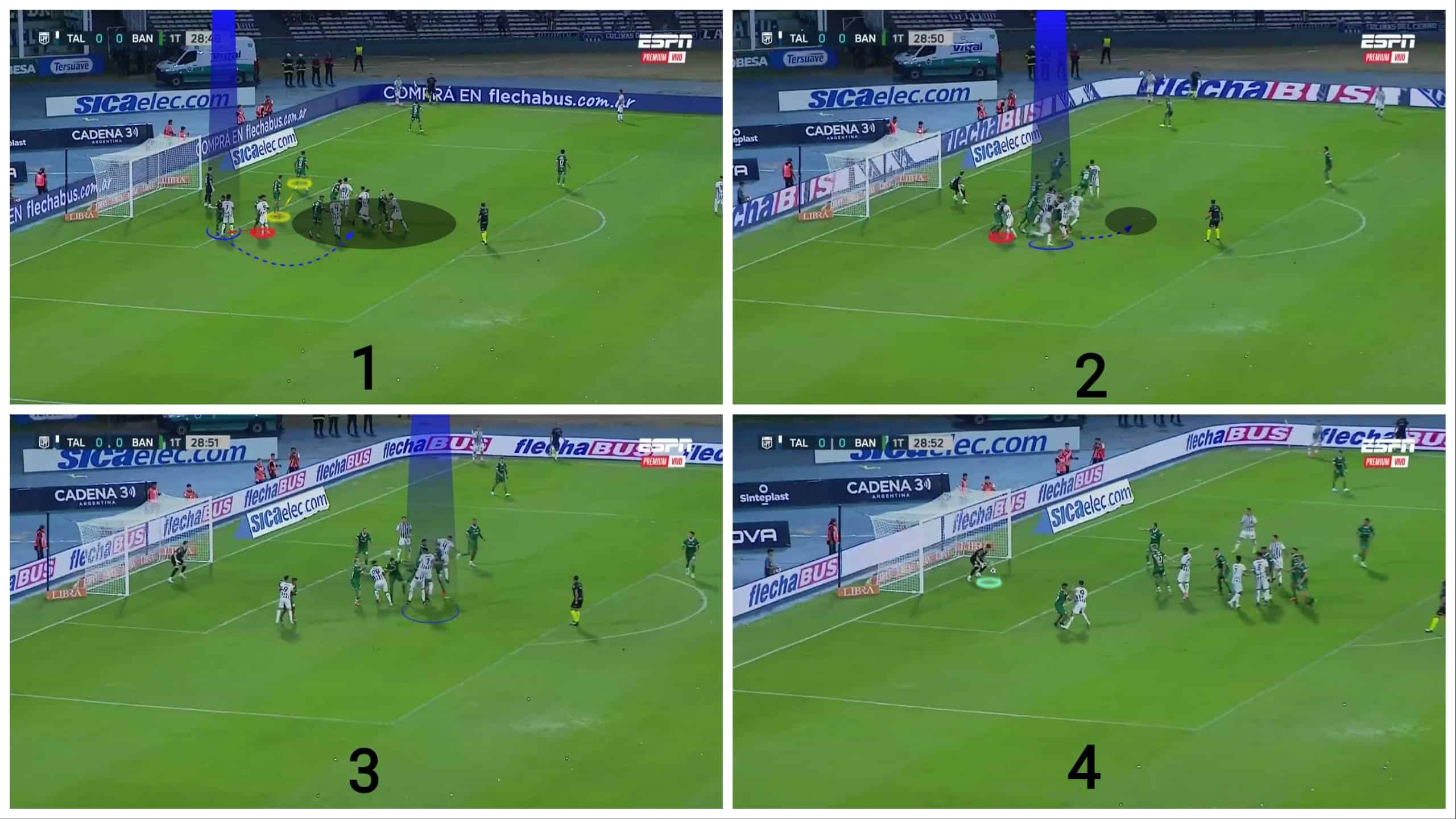
Acting as a Fence
They also use a common trick against teams who defend in a hybrid system. They use some players to act as a fence blocking the man-markers or the second-zone players, if exist, to free the space for a late runner jumping without marking.
In the first photo, three man-markers are inside the black circle, so three attackers go to block them, forming a fence to the late player, highlighted in blue.
In the second photo, the fence is clear, so the targeted player is free while the last zonal player can’t reach at the right time because of the long distance he should take, so the headed shot threats the goal, but near the post, as in the third and fourth photos.
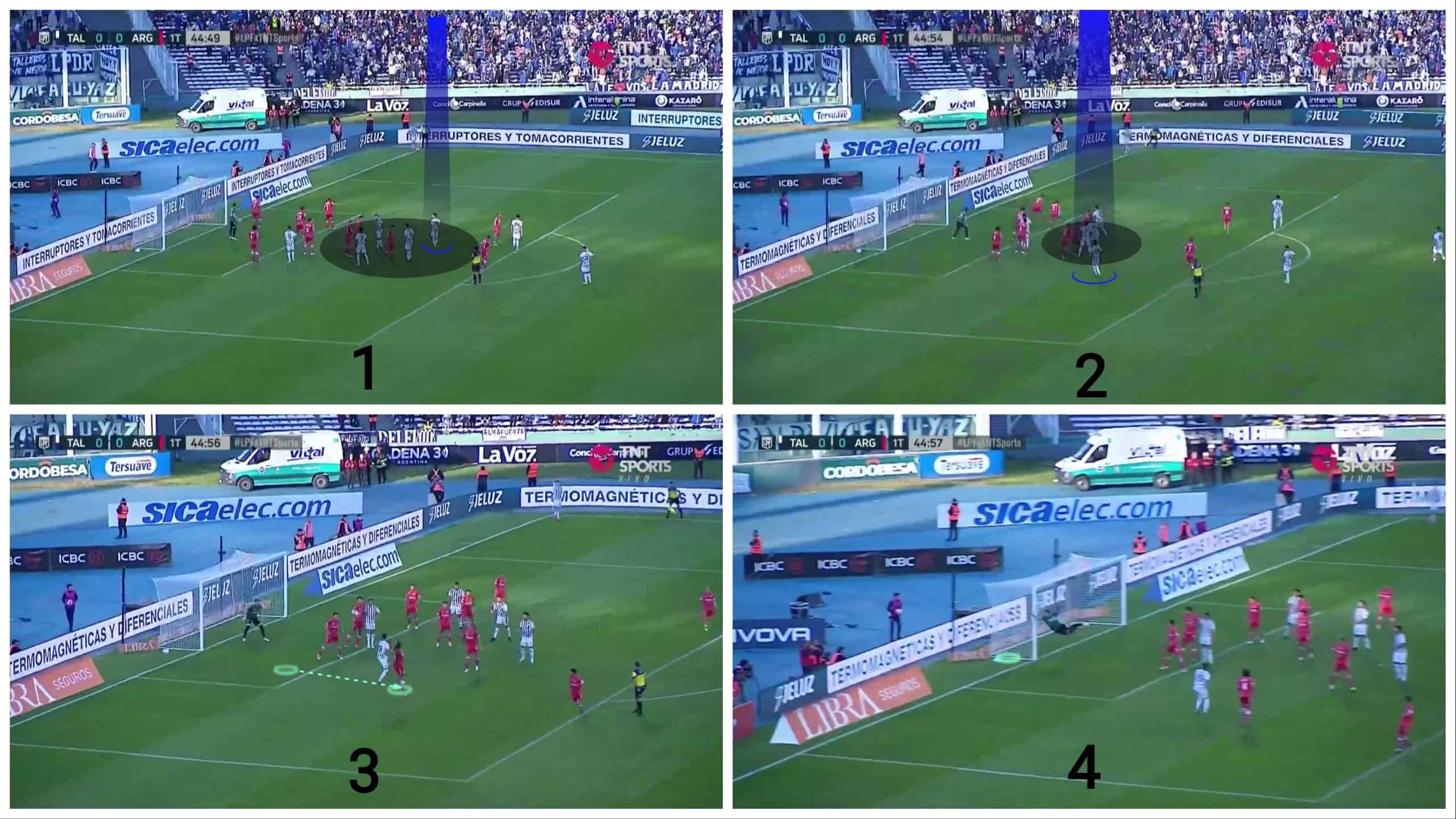
Exploiting Matías Catalán
Sometimes, all they need is to free space for Matías Catalán, who will win the aerial duel with his marker overwhelmingly, as we will explain below.
In the first photo, the opponent defends with a man-marking defending system with only two zonal players; one goes to defend the short corner, so all the runners go in different directions to empty the area near the penalty spot for Matías Catalán only with his marker, as in the second photo.
In the third photo, he jumps from movement without annoyance, only he and his marker, so he wins the aerial duel, but the goalkeeper saves the ball, as in the fourth photo.
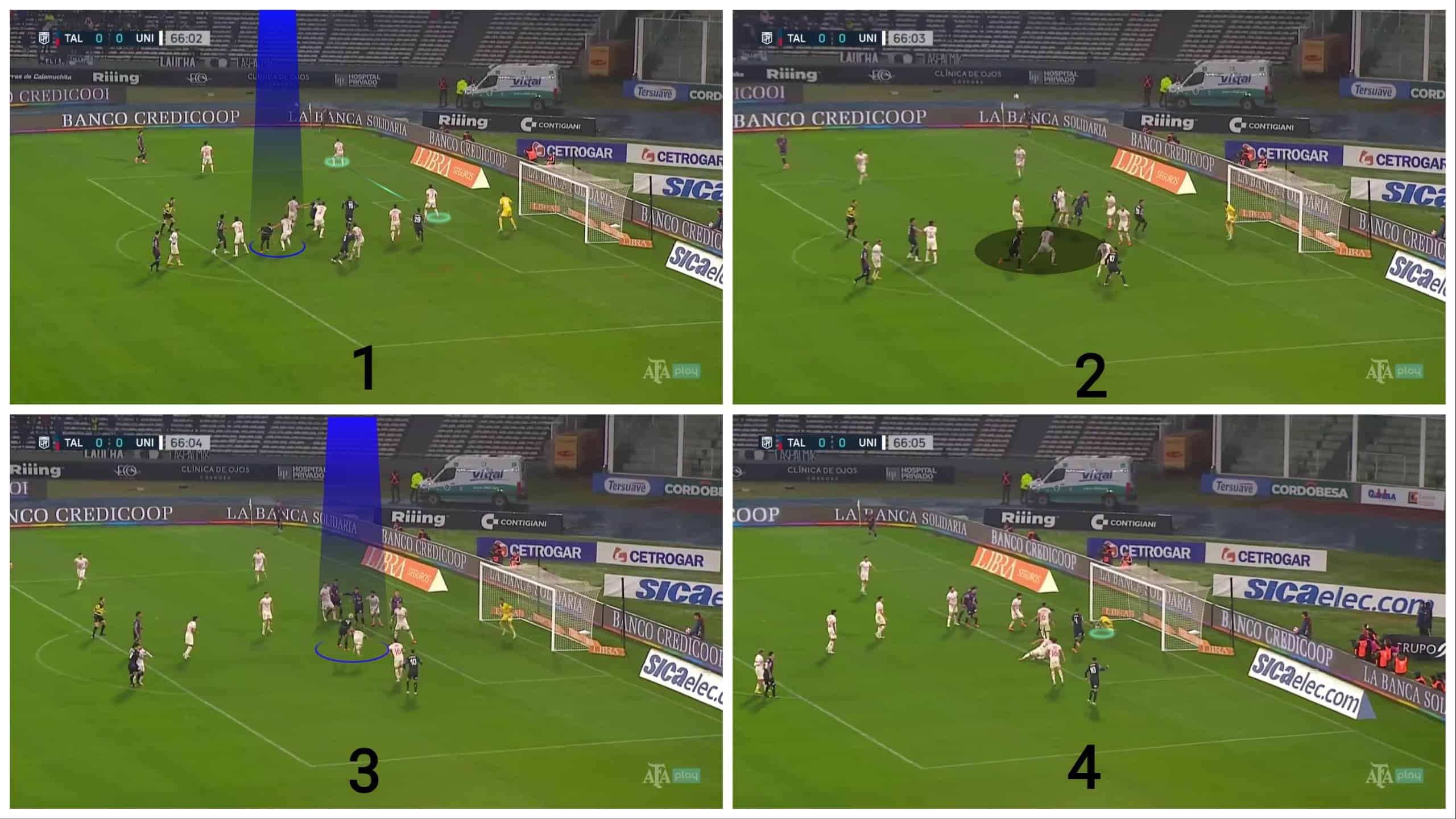
The far-post followers
They have a brilliant trick in most of their routines, which is making a player, at least, go to the far post in the defenders’ blind side after the first touch, whether they mean it in the main idea of the routine or only for following any inaccurate headed shot.
In the first photo, they are still targeting Matías Catalán with the same idea as the previous case, but this time, he nods the ball to a runner to the far post in the defenders’ blind side.
In the second photo, he pushes his marker to keep him away from any physical annoyance, so he wins the aerial duel by nodding the ball to his mate. In contrast, his marker gives all of his attention to the ball, leaving his marker moving in his blind side, as in the third and fourth photos.
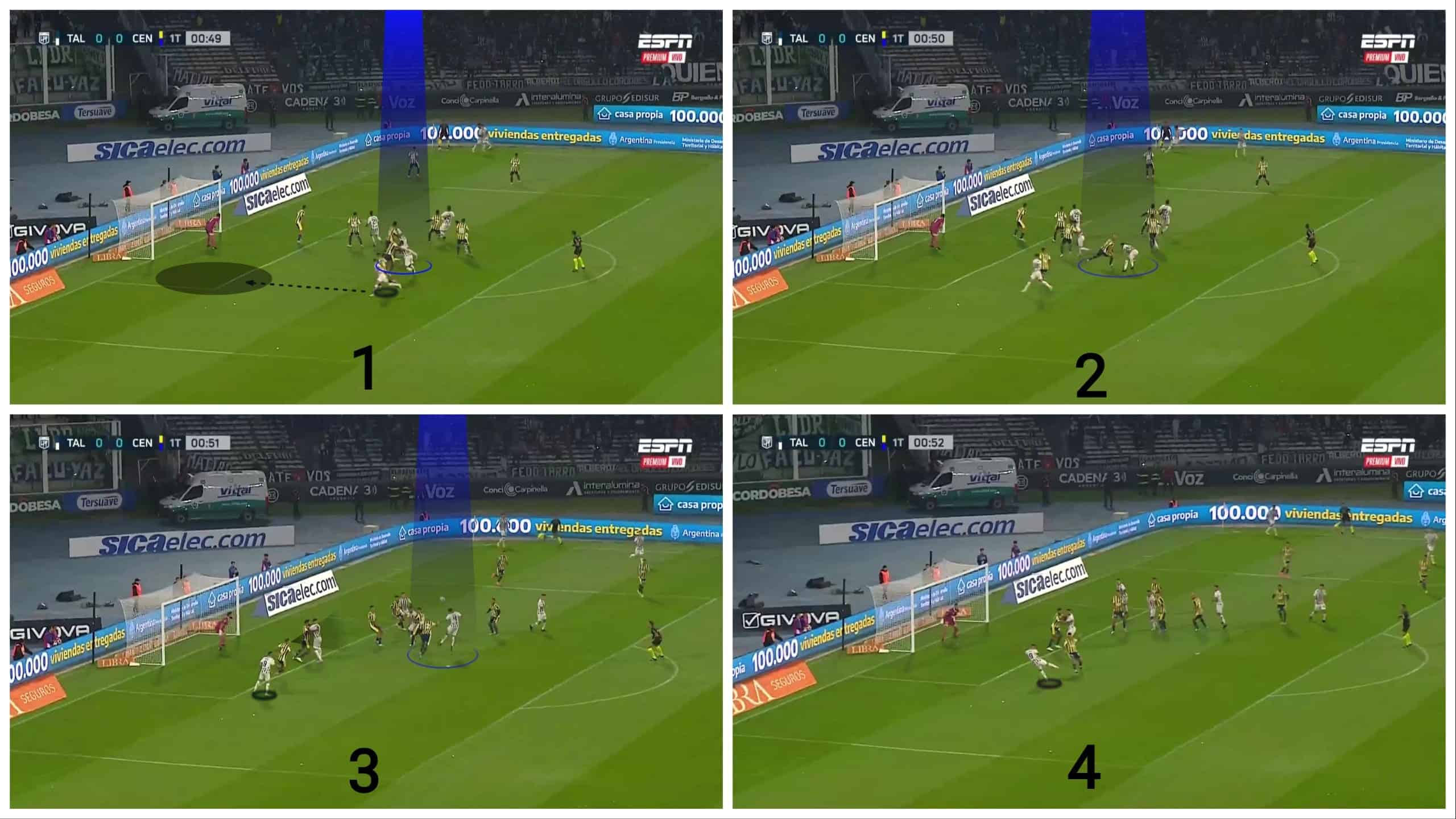
The result is a goal, as shown below.
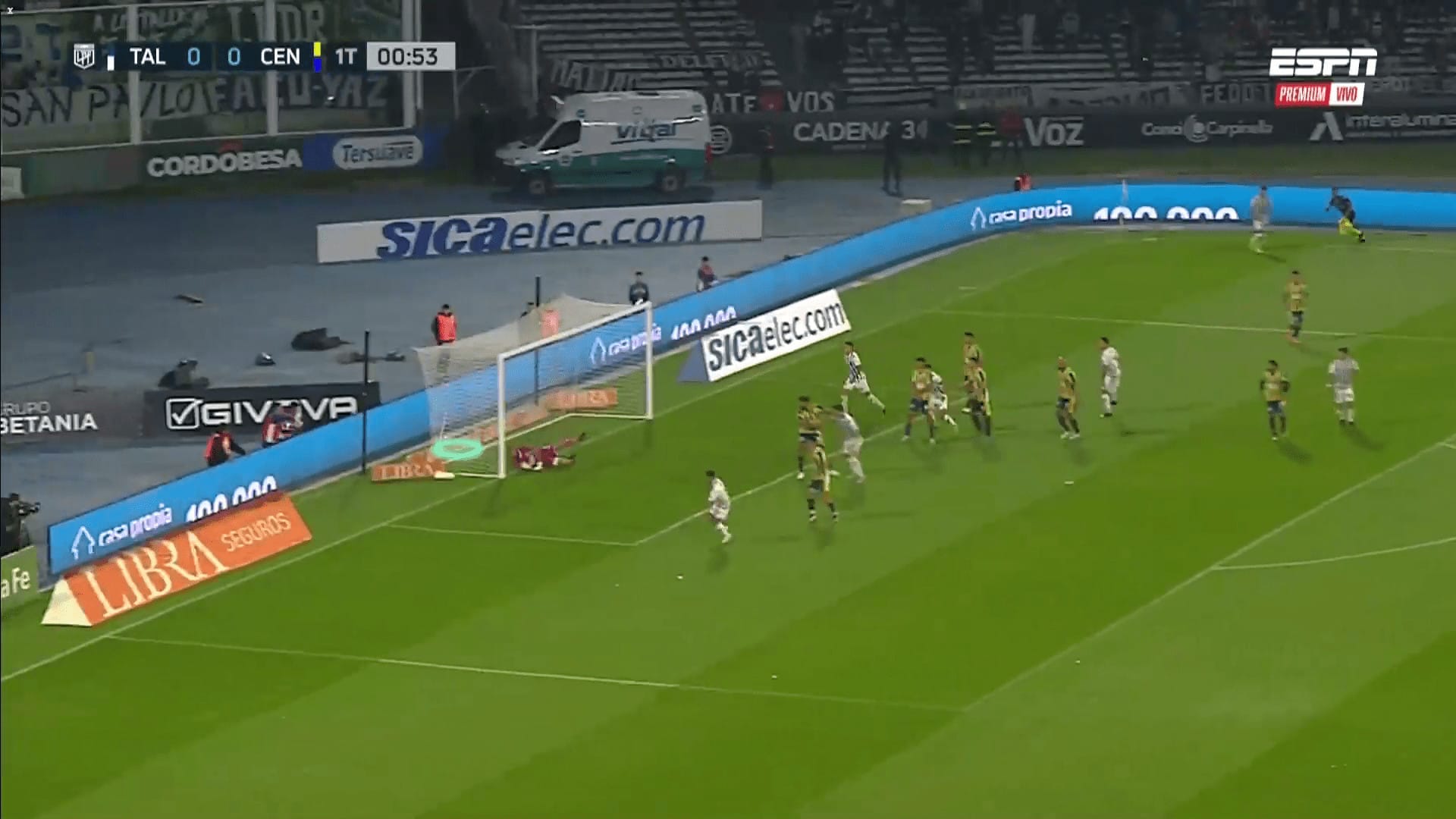
As we have mentioned, a player always moves to the far post to track any inaccurate headed shot, even if they don’t mean this in their default routine, as we will explain in this case below.
In the first photo, the opponent defends with three players in the first-zone line, four in the second-zone line, two against the short corner, and a player for the rebound.
In the second photo, our targeted player, Matías Catalán, runs in a curved run from the back to be away from the second-zone line, having a suitable space alone while an attacker goes to the far post, as in the third and fourth photos.
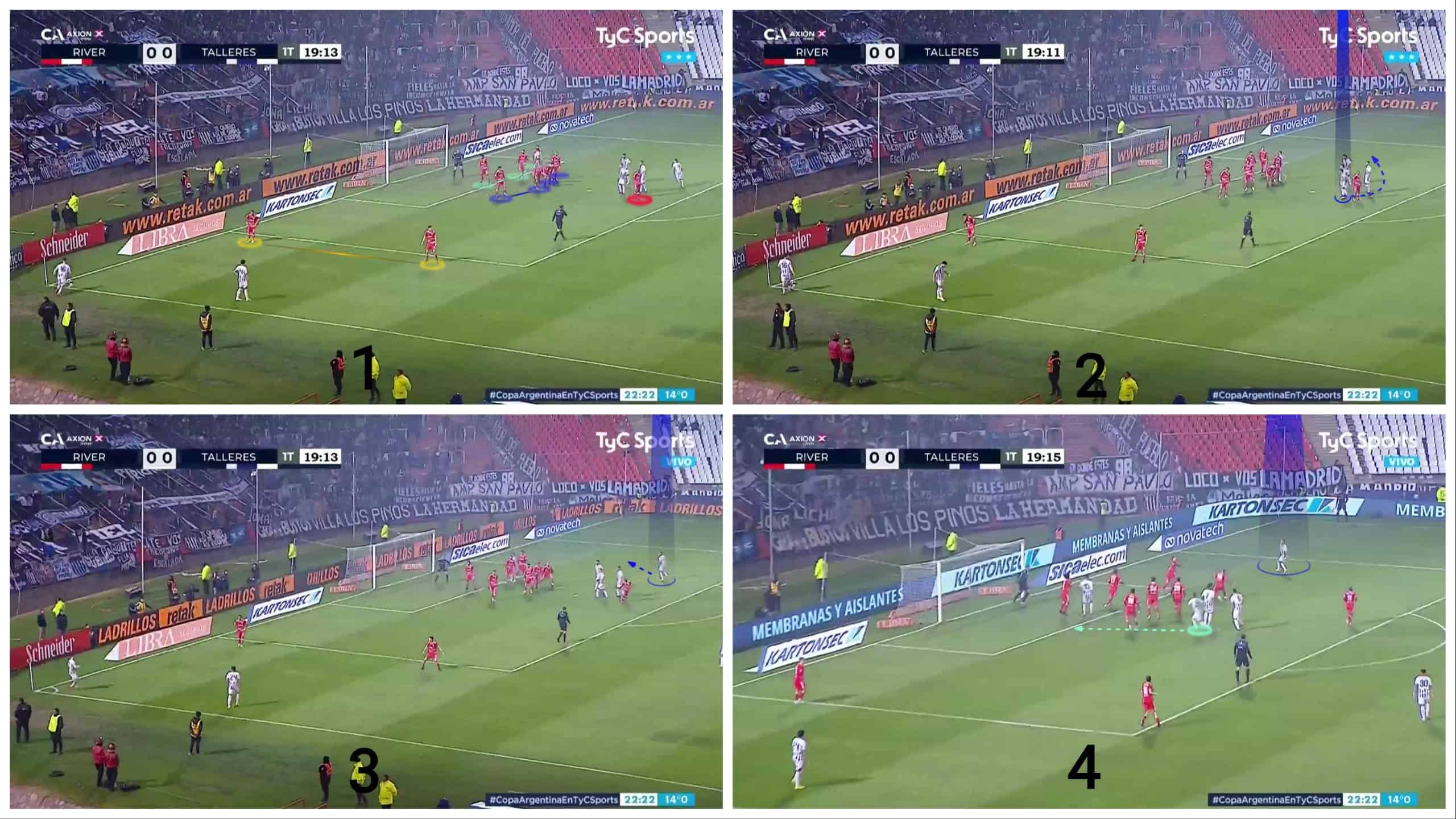
But in this routine, he receives the ball far away from the goal, so it is challenging to shoot the ball directly; this routine depends only on the second touch. He tries to pass the ball back to his two mates, but a player is running in the defender’s blind side to the far post, as shown below.
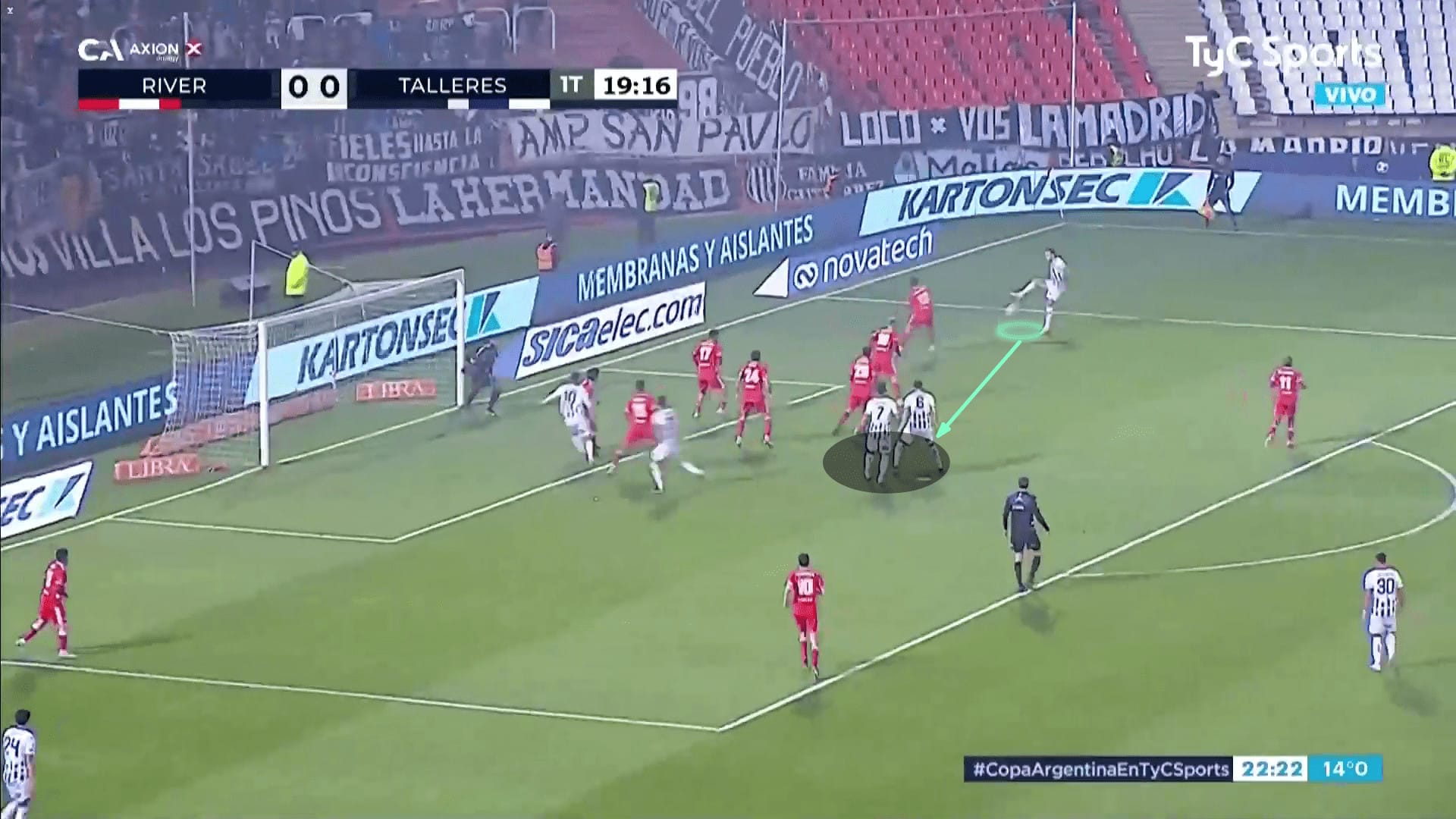
He didn’t make the right choice, so the defender gets the ball, as shown below.
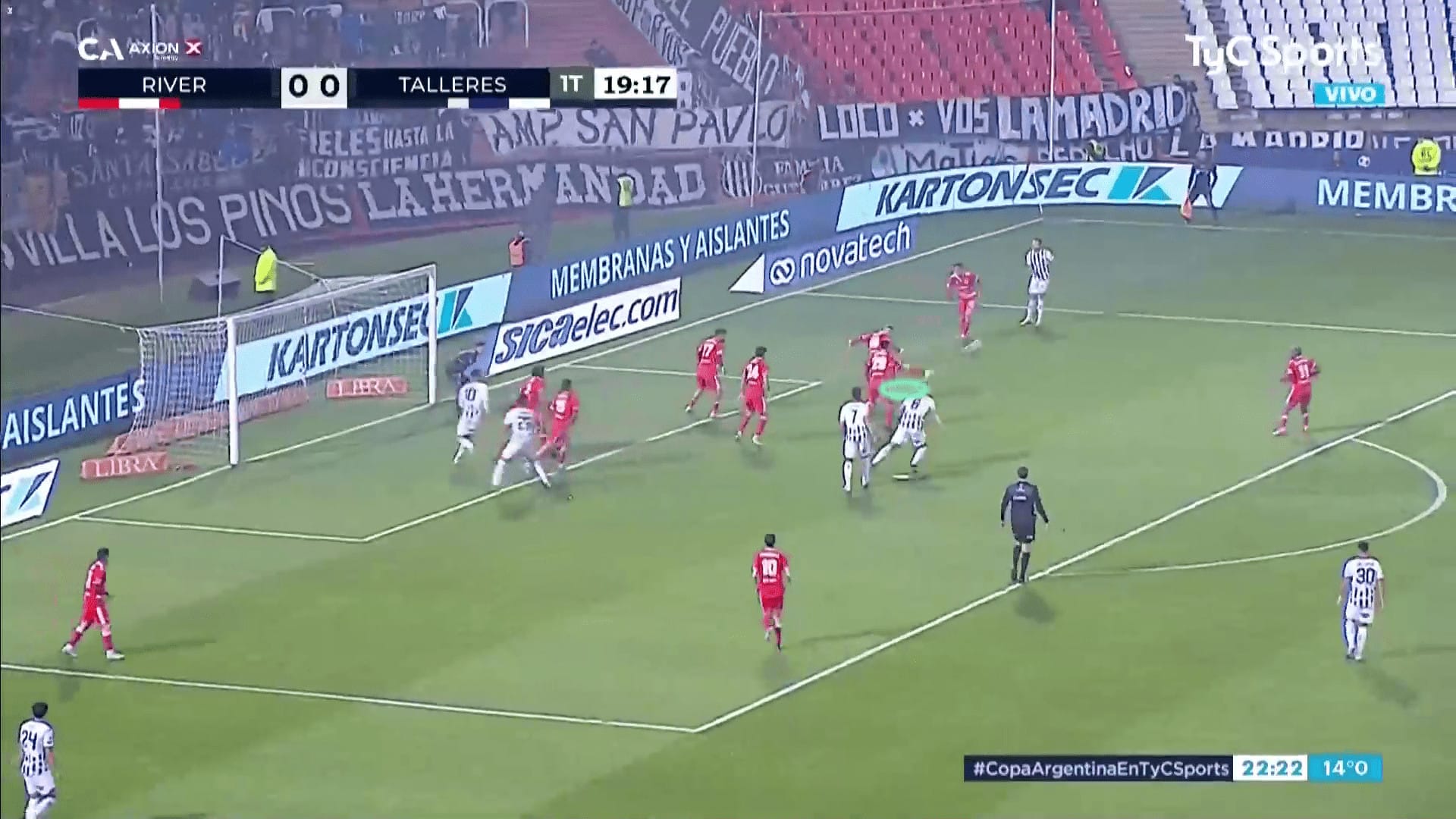
We still have the same idea of the importance of the far-post follower to get the lost ball, and the result is a goal in this case.
In the first photo, the opponent defends with four players in the first zonal line, three in the second zonal line, two against the short corner, and a player in the rebound zone.
In the second photo, the idea of the second-zone fence appears by putting three attackers blocking the three players in the second zone to free a player behind them.
In the third photo, the targeted player is free and ready for the headed shot while the red-highlighted player moves to the far post, tracking the ball. He may not touch the ball in the fourth photo, but his movement confuses the goalkeeper.
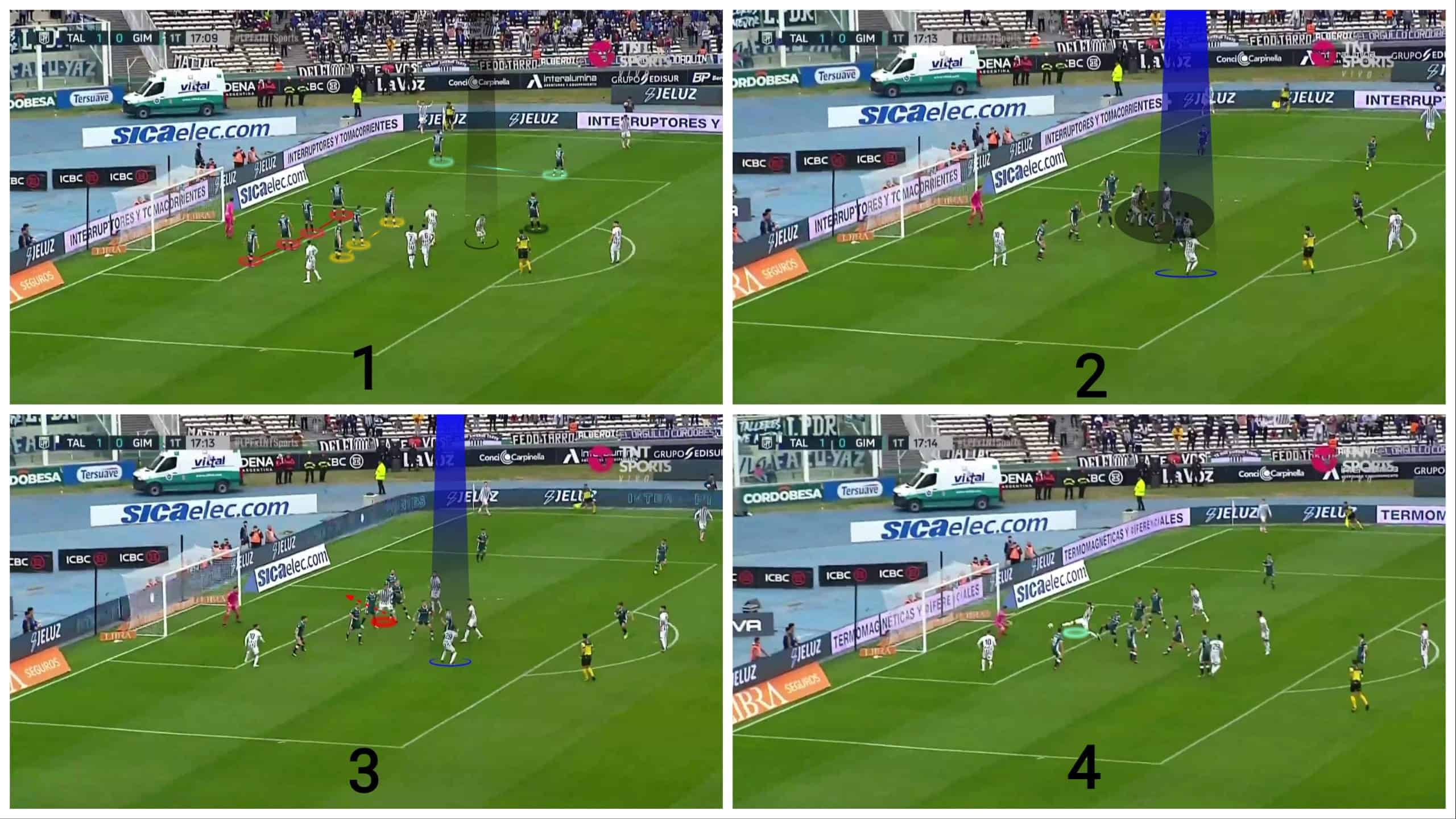
This small trick leads to a goal, as shown below.
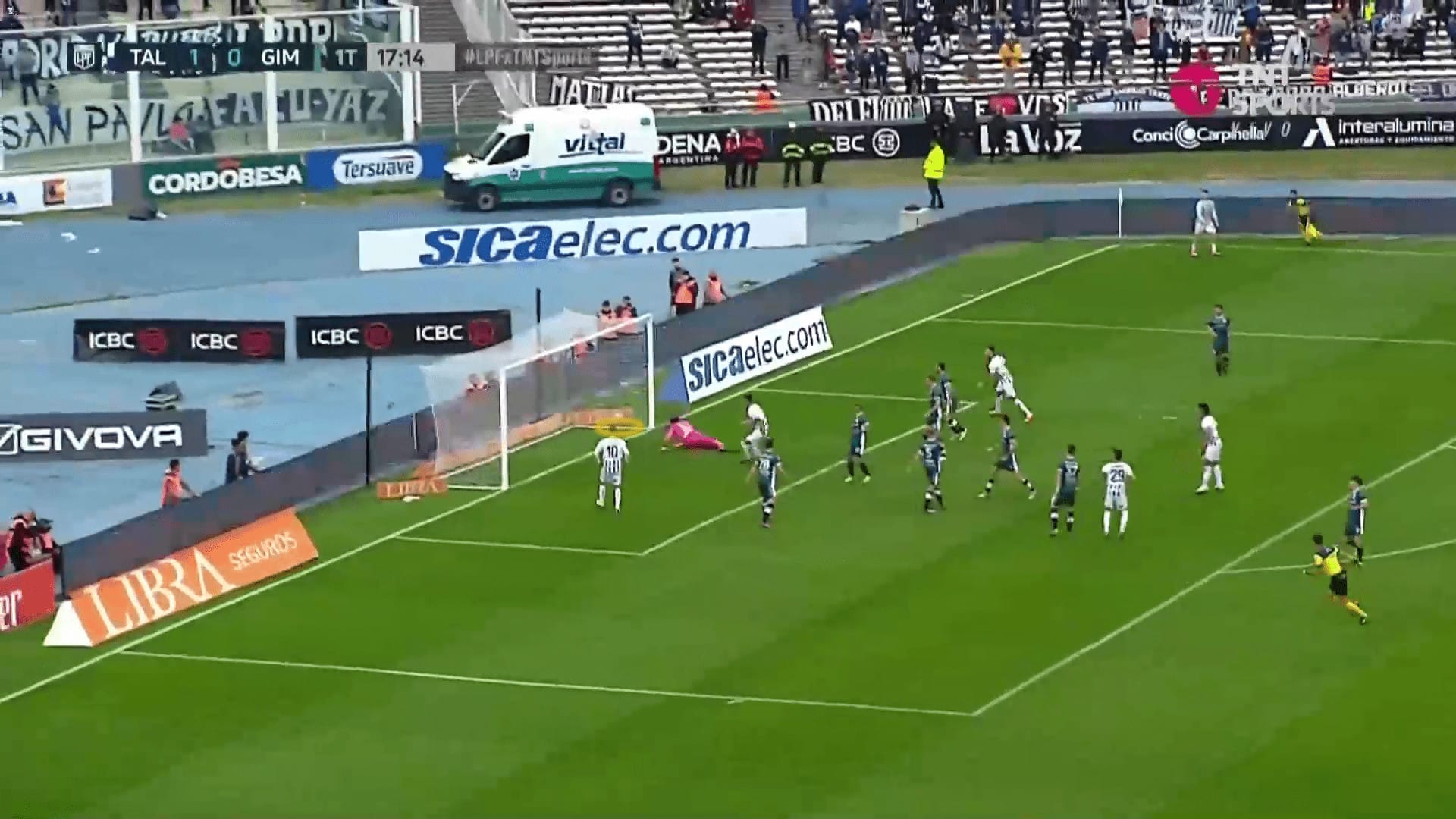
Short corners
As we mentioned, their brilliant use of different routines is what makes them unexpectable. We have mentioned different routines in which they cross the ball directly to the box, but how do they act against the well-defending teams or strong man-markers?
In the first photo, the opponent defends with four players in the first zonal line, a zonal player in front of them with extra instructions to help the short-corner defender if the corner is played shortly, a short-corner defender, three man-markers and a player for the rebound.
In the second photo, the taker passes the ball shortly while Matías Catalán moves to the near post to attract attention while the targeted area is on the far post.
In the third photo, the ball is passed again to an attacker who comes from the back, so the rebound defender goes to defend him, and one of the man-markers goes to stand in the rebound zone against the attacker in the rebound zone.
In the fourth photo, there is a player free from man-0marking because his marker left him going to the rebound zone, and this free attacker attacks the far post.
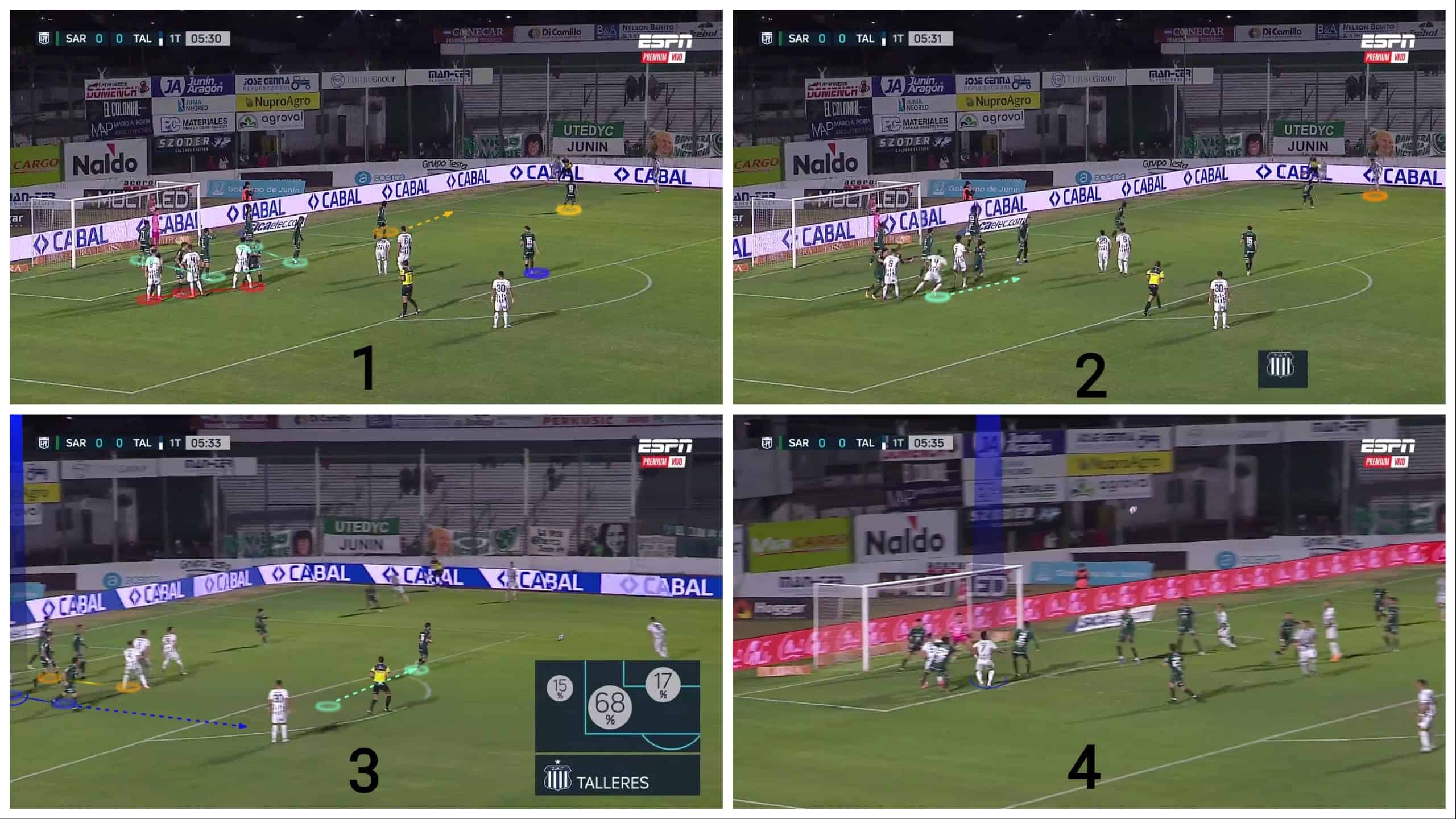
The result is a goal, as shown below.
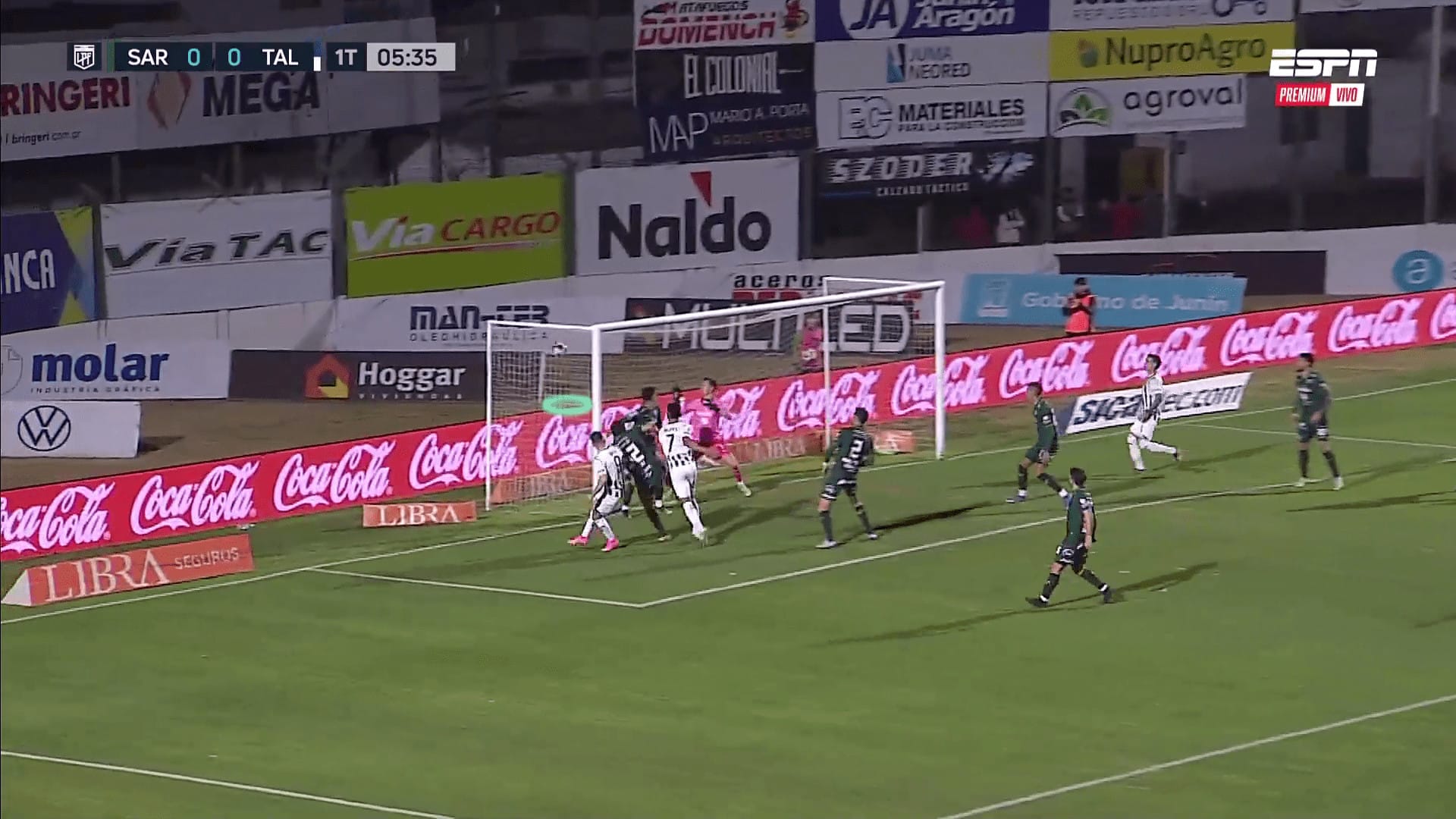
Direct pass to the rebound zone
One of their creative ideas is targeting the rebound zone by an attacker whose initial position was inside the box while a mate tries to act as a screen blocking the targeted player’s marker. In these routines, they need to have a player whose initial position is near the rebound zone to attract the attention of the defender of the rebound zone, as we will explain below.
In the first photo, the opponent defends in a man-marking defending system with only two players in a zonal defending system: two players against the short corner and a player to defend the rebound zone. Our targeted player runs back in a curved run from the blind side of the defender of the rebound zone, but what about his marker?
They use the same idea of the screen from the nearest mate, as shown in the second photo, so he receives the ball free, scoring a beautiful goal, as in the third and fourth photos.
The most important note we should say is that you can notice that all of the previous different routines have the same principles, so they are easy for players to understand. At the same time, they are challenging to be expected from the opponents.
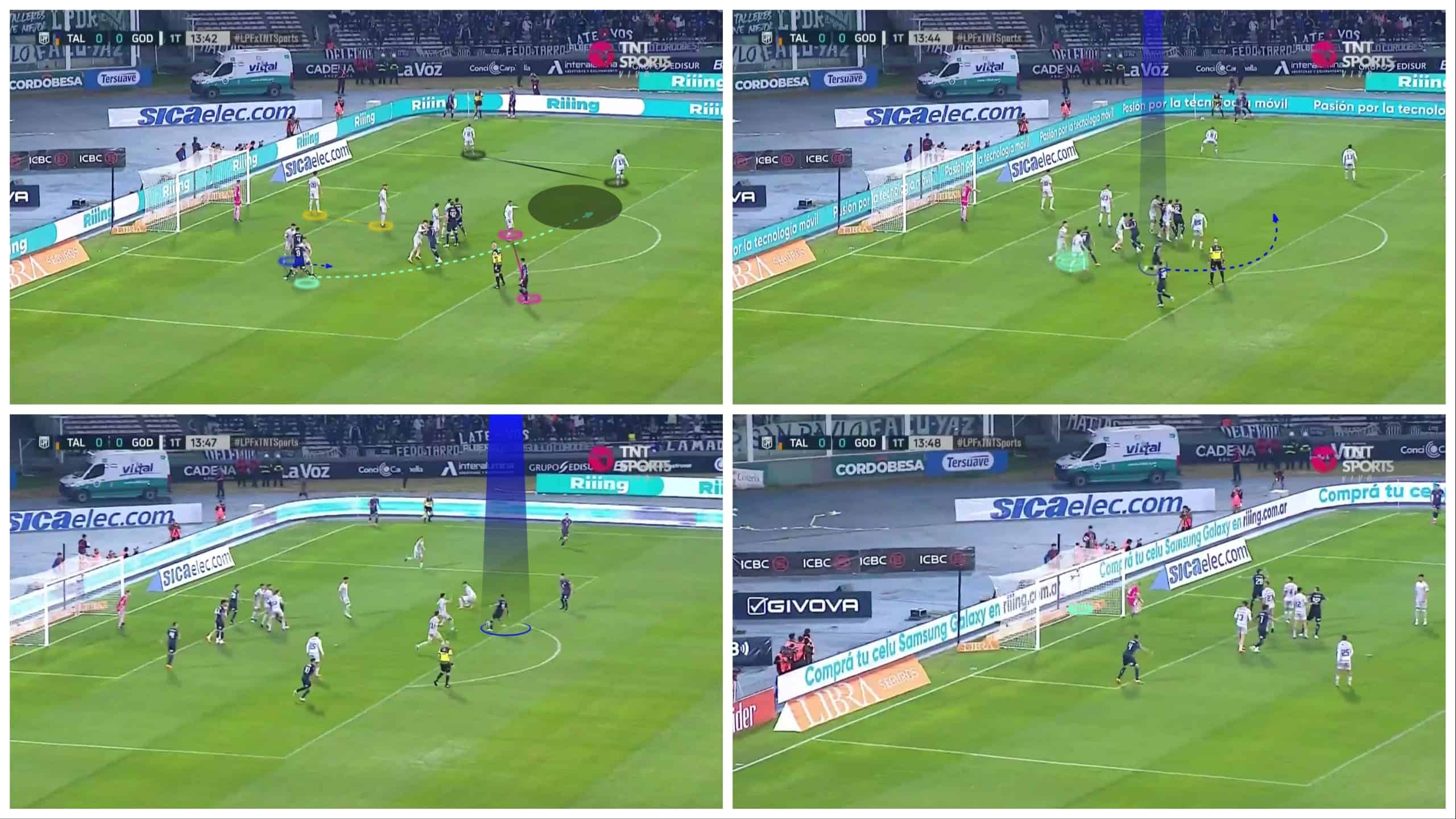
Conclusion
We have discussed in this analysis the different tactics of Talleres Córdoba in corner kicks and the extent of their distinction that appeared clearly in scoring eight goals from corner kicks over the two phases of the Argentinian league season ( Primera División and Copa de la Liga Profesional ).
In this set-piece analysis, we have discussed their reliance on their excellent defender, Matías Catalán, aerial duels, making a fence against the markers, floated crosses, short corners and direct passes for the rebound.

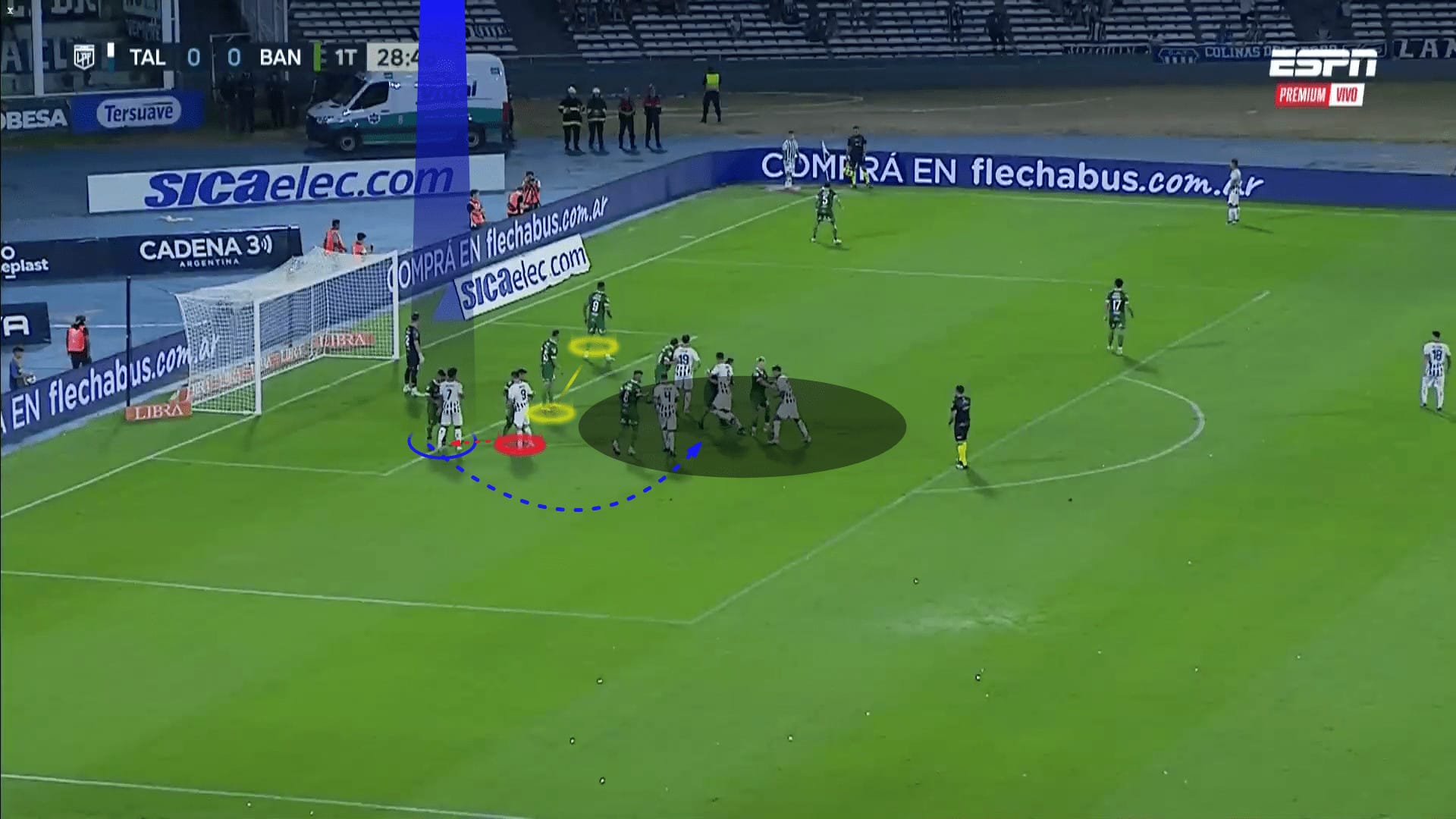




Comments